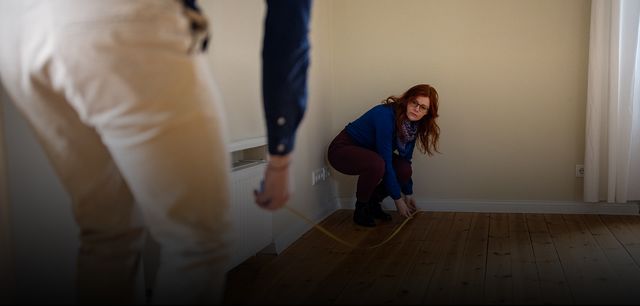09 february 2023
What do Liberia, Myanmar and the USA have in common? In these states, measurements are not taken in metres. In every other country in the world the metre is the official standard. And yet, at just over 220 years old, the metre is a fairly new “invention”.
With units of measurement such as inches, hand-spans, feet, cubits and steps, for thousands of years the human body was the measure of all things. But like human feet, the unit of measurement used varied quite a lot from region to region: in Weimar (Thuringia, Germany), for example, a foot was significantly shorter than it was in Vienna, less than 500 kilometres away as the crow flies. In German cities and states alone, people had to measure and calculate using 18 different foot measurements. This was impractical and confusing and made trade very complicated. The Academy of Sciences in Paris concluded that some degree of standardisation was needed. So, in the midst of the French Revolution, it set about developing a universal measure of length. On 25 March 1791, the National Constituent Assembly in Paris accepted the researchers' proposals. The “metre”, as it was christened two years later, was to be defined by the circumference of the Earth. It was to be one ten-millionth of the distance connecting the equator to the North Pole, passing through Paris.
Mission for astronomers
The renowned astronomers Jean-Baptiste Joseph Delambre and Pierre Méchain were commissioned to remeasure the so-called meridian arc from Dunkirk to Barcelona. This process took several years in the heat of revolutionary turmoil. In 1798, the scientists were finally able to present the results of their measurements. However, more precise measurement methods soon revealed that the distance from the North Pole to the equator via Paris was actually 2,000 metres longer than that calculated by the two researchers – meaning that the metre is actually about 0.2 millimetres too short. This was because Delambre and Méchain had not included in their calculations the irregular dents in the form of mountains and valleys which characterise the Earth’s surface. Nevertheless, they stuck to the “wrong” metre, which was now fixed as the length of a concrete object – the original metre. Copies of the original metre were cast from platinum and iridium, which were then handed over to the calibration institutes of other nations. In 1875, twelve countries, including the German Empire, decided to officially introduce the metre and the metric system.
New definition methods
But, of course, the problem remained. If you use a concrete object as the basis of a unit of measurement, it will gradually lose accuracy. Even a platinum metre can be damaged during transport or use. And the more often you duplicate the original metre, the more the cast will deviate from the original. It was for these reasons that researchers started thinking about other calculation methods which could be used to define the metre. The aim was to find a definition method that corresponded as closely as possible to the “imprecise” original metre. To this end, physicist Albert Michelson first introduced the interferometer in 1883. This is an instrument that can measure tiny distances by superimposing light waves. In fact, interferometry soon came into regular use at the International Bureau of Weights and Measures. However, Michelson’s method did not supplant the original official definition of the metre.
Light wins the race
Unlike krypton. Researchers found that this noble gas was eminently measurable. As of 1960, therefore, the metre was redefined. It was now to be exactly equal to 1,650,763.73 wavelengths of the krypton line. However, the new metre standard did not last very long: In the same year, the laser was built as a working prototype of a new technology that makes it possible to take incredibly precise distance measurements. In 1983, the speed of light became the uniform standard. Since then, a metre has been defined as the distance covered by a beam of light in the 299,792,458th fraction of a second. Because light travels at the same speed everywhere in the universe, you can always measure exactly one metre. Assuming, that is, you have a laser and the appropriate expertise.



